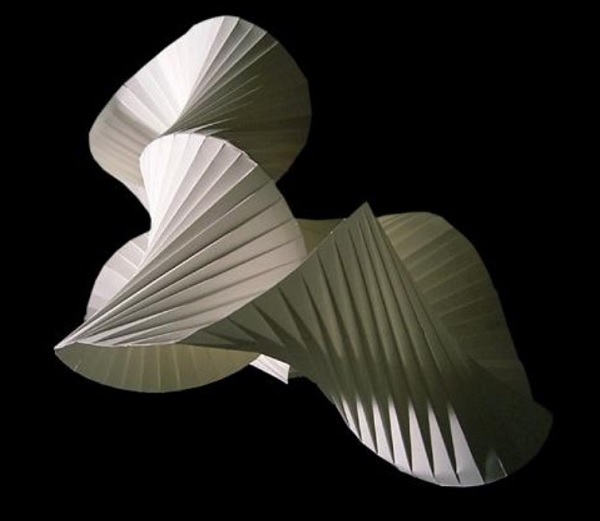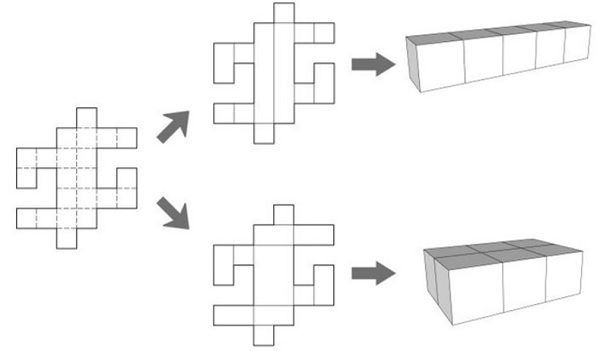Folding Techniques
An Overview of Folding Techniques in Architecture Design
Tao Shen, Yukari Nagai
Knowledge Science, Japan Advanced Institute of Science and Technology, Nomi, Japan

Figure 1. An example of rigid folding.
In recent years, folding techniques are widely used by many architects to make 3D forms from 2D sheets as an inspiration for their design, which enables simpler and more intuitive solutions for architectural realization.
This research provides an overview of using folding techniques in architecture design, with an emphasis on their new applications. In this overview, we classify folding techniques as computation geometry folding techniques and manual folding techniques. Finally, we provide recommendations for future development.

Figure 2. An Example of curved folding.
Folding techniques, also known as origami, the generic term for paper folding, have been applied to many fields, such as in material research, robot structure, electric devices and architecture design. Folding techniques are popular in architecture design mainly for two reasons, possessing creative architectural structure with advantageous load-carrying capabilities and generating esthetic and deployable architectural form.
The two parts are extremely important in architecture design, especially for innovative design theory. Because of these positive findings, a number studies investigated the specific applications of folding techniques in building design and summarized them in a brief review. For example, Stavric & Wiltsche did investigations on spatial quadrilateral meshes from folding patterns.
Furthermore, Lebée presented a review of current challenges regarding folds and structures starting from simple notions of paper folding. However, these studies are overly specific and practical. On this background, this study aims to present a general review on folding techniques in architecture design and provide recommendations for future development.

Figure 3. Static behavior of different folding structures.
The concept of fold has many meanings, in nature, it can be found at many different scales from the folding of graphene layers to the unfolding of tree leaves and the mountains building. However, the abstract idea of folding techniques emerged recently, which was also called origami in Japan.
The association between origami and mathematics is profound and insightful, hence with the rapid development of computer science, computation geometry folding techniques emerged as a new theoretical field in the last decades.

Figure 4. Air Force Academy Chapel, Colorado Springs, USA.
This research presents a general review of folding techniques and their applications in architecture design. Considering the techniques as a form finding process, it is an original mechanism to obtain inspirations both in architectural structure and form design.
Furthermore, it plays an important role of design stimulus in the early stage of architecture design process, which generates most ideas in the whole design process.

Figure 5. A common development folding into two boxes of size 1 × 1 × 5 & 1 × 2 × 3.
For future development of folding techniques in architecture design, this research presents two new research fields. The first new field is investigating folding techniques from the perspective of cognitive science, considering folding techniques as a kind of design stimulus and exploring their applications within the framework of a concept synthesizing process may achieve more creativity in architecture design.
The second new field is exploring the applications of unfolding techniques for architecture design, as the reverse process of folding. It is more similar to the deconstruction process in architecture design, which opens a wide perspective for developing folding techniques in architecture design.




























Comments